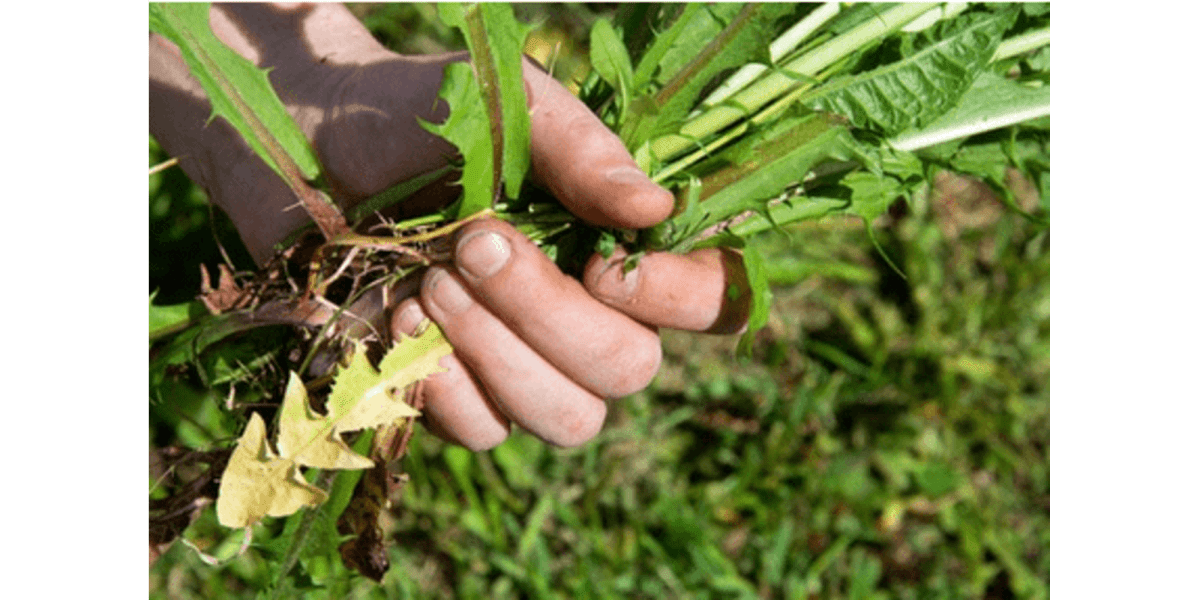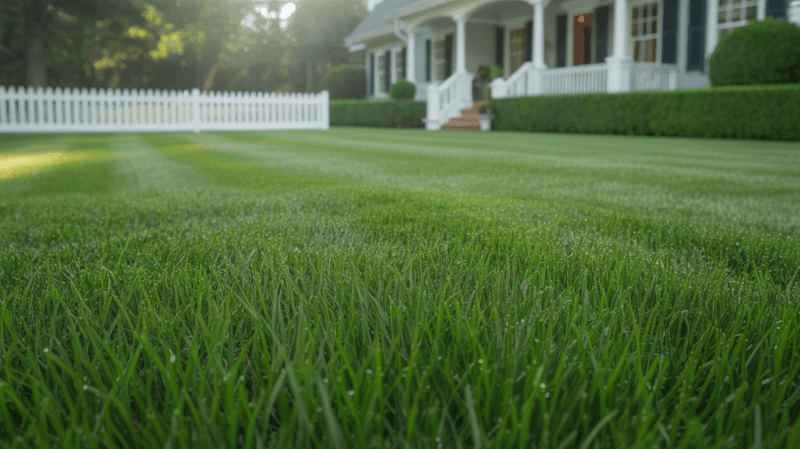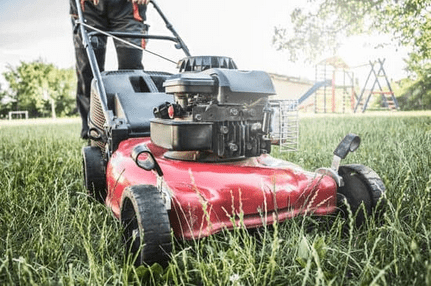Control Your Lawn Weeds:
This guide shares practical, science-backed techniques to reclaim your yard. You’ll learn how to spot early infestations, choose safe treatments, and prevent future outbreaks. Let’s transform your outdoor space into a thriving, weed-resistant paradise!

A lush, green yard boosts curb appeal and creates a space for relaxation. But those stubborn invaders—dandelions, clover, and crabgrass—can turn your outdoor oasis into a battleground. Targeted strategies protect your turf while eliminating unwelcome guests, saving you time and money.
Homeowners spend $80–150 on DIY solutions or $350+ per season for professional care. Why does it matter? Weeds aren’t just eyesores. A single dandelion spreads 200 seeds, while thistles steal water and nutrients from surrounding plants. Left unchecked, they create patchy, weak grass.
Avoid common missteps like using vinegar or salt-based remedies. These non-selective tactics harm everything they touch, including your healthy turf. Instead, focus on methods that address root systems without collateral damage.
Understanding Lawn Weeds and Their Impact
Every uninvited plant in your yard acts as a messenger about what's happening beneath the surface. Learning to read these signs helps create effective solutions while protecting desirable growth. Let’s explore the main troublemakers and their hidden impacts.

Spotting the Three Types of Yard Invaders
Broadleaf varieties like dandelions and clover stand out with their wide leaves and stubborn taproots. These deep roots store energy, letting them regrow even after removal. Grassy imposters such as crabgrass blend in with turf but spread rapidly through seeds.
| Type | Examples | Key Features | Soil Clues |
|---|---|---|---|
| Broadleaf | Dandelion, Clover | Flat leaves, taproots | Compact soil |
| Grassy | Crabgrass, Foxtail | Narrow blades | Thin turf |
| Sedge | Nutsedge | Triangular stems | Wet areas |
The Hidden Battle for Resources
Unwanted plants compete fiercely for sunlight and water. Their aggressive root systems often outpace grass, stealing nutrients before neighboring plants can access them. This underground warfare weakens turf over time, creating bare patches where more weeds can establish.
Sedges like yellow nutsedge reveal drainage issues, while plantain indicates compacted earth. Addressing these underlying conditions helps create an environment where desired growth naturally thrives.
Preparing a Healthy Lawn for Weed Resistance
A thriving green space becomes its own best protector when given the right foundation. Focus on soil vitality and smart maintenance to create conditions where turfgrass thrives and weeds struggle.

Soil Health and Nutrient Management
Healthy earth forms the bedrock of weed resistance. Test your soil every 2-3 years to check pH levels and nutrient balance. Most grasses prefer slightly acidic soil (6.0–7.0 pH). Lime or sulfur amendments can correct imbalances.
| Soil Test Result | Solution | Benefit |
|---|---|---|
| Low nitrogen | Apply slow-release fertilizer | Boosts grass density |
| High acidity | Add pelletized lime | Improves nutrient uptake |
| Compacted soil | Aerate in spring/fall | Enhances root growth |
Optimal Watering and Mowing Practices
Deep, weekly watering trains roots to grow downward—making turf more drought-resistant. Set mower blades higher during summer heat to protect grass crowns.
| Grass Type | Ideal Height | Mowing Frequency |
|---|---|---|
| Kentucky Bluegrass | 2.5–3.5" | Weekly |
| Bermuda | 1–2" | 5–7 days |
| Fescue | 3–4" | 10–14 days |
Taller blades shade soil surface, blocking sunlight from weed seeds. Always use sharp mower blades—ragged cuts invite disease and stress plants.
Prevention Strategies to Deter Unwanted Weeds
Smart prevention starts with timing and technique. Outsmart invaders by strengthening your turf when they’re most vulnerable. These proactive measures create a dense grass canopy that naturally resists colonization.
Aeration, Overseeding, and Fertilization Techniques
Fall aeration punches holes in compacted soil, letting roots breathe. This timing avoids spring weed germination while improving water absorption. Pair this with overseeding to fill bare spots—nature’s weed blockers.
| Timing | Action | Benefit |
|---|---|---|
| Early Fall | Core aeration | Reduces soil compaction |
| Late Spring | Corn gluten meal | Blocks seed growth |
| Every 8 Weeks | Balanced fertilizer | Feeds grass, starves weeds |
Apply corn gluten meal as natural weed growth prevention in early spring. It stops seeds from rooting without chemicals. Fertilize regularly with slow-release formulas to maintain thick grass.
Proper Mowing Height and Scheduling
Taller grass shades soil, blocking light from weed seeds. Keep mower blades sharp and high—3 inches works for most turf types. Water deeply 3x weekly to encourage deep roots that outcompete shallow invaders.
Consistency matters most. Stick to a seasonal schedule that keeps your lawn thriving through heat waves and dry spells. Healthy grass needs less weed control over time.
How to Control Lawn Weeds Without Killing Your Grass
Modern yard care offers precise tools that eliminate invaders while preserving turf. Selective herbicides act like specialized surgeons, removing unwanted growth without harming surrounding grass. These formulas distinguish between plant types through advanced chemistry.
Science-Backed Formulas for Lasting Results
Products containing 2,4-D target broadleaf weeds by mimicking natural growth hormones. This disrupts cellular processes in dandelions and clover, causing uncontrolled growth until plants exhaust themselves. Visible changes appear within 24 hours, with full results in two weeks.
Popular options like Weed B Gon and Killex concentrate their action on weed leaves. Apply during active growth phases using pump sprayers for accuracy. Morning treatments work best when dew helps absorption.
| Product | Key Feature | Best For |
|---|---|---|
| Weed B Gon | Rainproof in 1 hour | Large lawns |
| Killex | Fast absorption | Stubborn patches |
| Mirimichi Green | Organic formula | Pet-friendly yards |
Eco-conscious homeowners appreciate Mirimichi Green’s plant-based formula. This organic weed killer breaks down quickly, making treated areas safe for children and pets within hours. Always wear gloves and follow label instructions for optimal safety.
Natural and Organic Methods for Weed Control
Earth-friendly tactics offer powerful alternatives for maintaining vibrant landscapes. These approaches work with nature’s rhythms to suppress unwanted growth while nurturing soil ecosystems. Let’s explore safe, effective strategies that keep your green space thriving.
DIY Remedies: Boiling Water, Salt, and Vinegar Solutions
Common household items become weed-fighting tools when used strategically. Boiling water delivers instant results by shocking plant cells—ideal for driveway cracks or isolated patches. Apply carefully to avoid nearby grass.
- Salt spray: Mix 1 cup salt with 3 cups hot water + 1 tsp dish soap. Targets leaves through dehydration
- Vinegar blend: Combine 1 gallon white vinegar (5% acidity) with 1 cup lemon juice. Spray on sunny days for maximum absorption
These solutions work best on young weeds. Reapply every 3 days until roots die. Avoid overusing salt—it can accumulate in soil.
Using Flame-Weeding and Biostimulants Safely
Propane torches quickly wilt invaders in large areas. Pass the flame briefly over weeds—heat bursts cell walls without igniting plants. Always keep water nearby and check local fire regulations.
Biostimulants like Release 901C™ strengthen grass naturally: - Enhances nutrient uptake through microbial activity - Improves soil structure for better root development - Reduces weed seed germination by 60% in trials
Combine these methods for layered protection. Morning applications prevent sun-scorch, while evening treatments let solutions penetrate overnight. Your yard becomes a balanced ecosystem where desired plants thrive.
Smart Herbicide Choices and Manual Weed Removal Tools
Tackling unwanted plants requires a mix of precision tools and smart strategies. Whether you prefer hands-on approaches or targeted treatments, success lies in matching methods to specific challenges. Let’s explore how to make every effort count.
When to Pull vs. Spray
Manual removal shines for isolated dandelions or young sprouts. Wait until after rain or watering—moist soil releases roots more easily. Grip the plant at its base and twist gently while pulling upward to extract the entire root system.
| Method | Best For | Tools Needed | Key Benefit |
|---|---|---|---|
| Hand-Pulling | Small patches, seed prevention | Hori-hori knife, crack weeder | Immediate results |
| Herbicide Treatments | Large infestations | Selective weed killer | Deep root elimination |
Specialized tools make manual work efficient. A dandelion digger removes taproots intact, while serrated-edge knives slice through tough stems. For paved areas, telescoping weeders reach deep into cracks without straining your back.
Chemical products solve widespread weed problems quickly. Look for formulas labeled "selective" that spare grass. Apply during calm mornings to prevent drift onto desirable plants. Always follow label instructions for mixing and safety gear.
Timing matters most with flowering dandelions. Remove yellow blooms before they turn white and fluffy. This stops thousands of seeds from becoming next season’s headache. For persistent invaders, combine manual removal with spot treatments for lasting control.
Final Strategies for a Lush, Weed-Free Lawn
A weed-resistant lawn thrives through strategic maintenance and timely interventions. Regular checks catch invaders early—spot-treat young sprouts before they spread. Fill bare patches quickly with quality grass seed to deny weeds space to grow.
Apply pre-emergent herbicides as soil warms in early spring. These products form an invisible shield against crabgrass and other annuals. For garden beds, landscape fabric topped with mulch blocks light from weed seeds naturally.
Persistent perennials like thistles demand patience. Dig deep to remove every root fragment, and monitor the area for regrowth. Some plants need repeated removal over 2-3 seasons before surrendering.
Nourish your turf with balanced fertilizer to strengthen roots. Healthy grass crowds out competitors by absorbing water and nutrients first. Pair this with proper mowing heights—taller blades shade soil, slowing weed growth.
Remember: consistency wins the long game. Stick to your care routine, and your lawn becomes its own best defense. With these methods, you’ll spend less time battling invaders and more time enjoying your vibrant outdoor space.
FAQ
Q: What’s the safest way to spot common lawn weeds like dandelions or crabgrass?
A: Look for distinct features like yellow flowers (dandelions) or low-growing, spreading stems (crabgrass). Check leaf shapes and growth patterns early in the season to catch them before they spread.
Q: Can healthy soil really prevent weeds from taking over?
A: Absolutely! Balanced soil pH and organic matter from compost or products like Milorganite boost grass health, making it harder for weeds to compete for nutrients and space.
Q: How often should I water my lawn to discourage weeds?
A: Deep, infrequent watering (1–1.5 inches weekly) encourages strong grass roots. Avoid shallow watering, which weeds like clover thrive on. Use a rain gauge to track moisture.
Q: Does mowing height affect weed growth?
A: Yes! Keeping grass at 3–4 inches shades the soil, blocking sunlight from weed seeds. Brands like Scotts recommend adjusting mower blades seasonally for optimal results.
Q: Are selective herbicides safe for all grass types?
A: Most, like Ortho Weed B Gon, target specific weeds without harming turfgrass. Always check labels for compatibility with your lawn type (e.g., Bermuda vs. Kentucky bluegrass).
Q: Will vinegar solutions harm my grass when killing weeds?
A: Yes—vinegar is non-selective. Apply it directly to weeds on windless days using a spray bottle. For safer options, try corn gluten meal or Espoma Organic Weed Preventer.
Q: When should I use flame-weeding tools?
A: Flame weeders work best on driveways or patios. Use them sparingly on lawns to avoid damaging grass. Always keep a water source nearby for safety.
Q: Is hand-pulling weeds worth the effort?
A: For small infestations, yes! Remove the entire root system with tools like Fiskars Stand-Up Weeder. Mulch afterward to prevent regrowth.
Q: Can biostimulants improve my lawn’s weed resistance?
A: Products like Kelp4Less Liquid Seaweed strengthen grass roots and stress tolerance, reducing space for weeds. Pair them with proper fertilization for best results.



